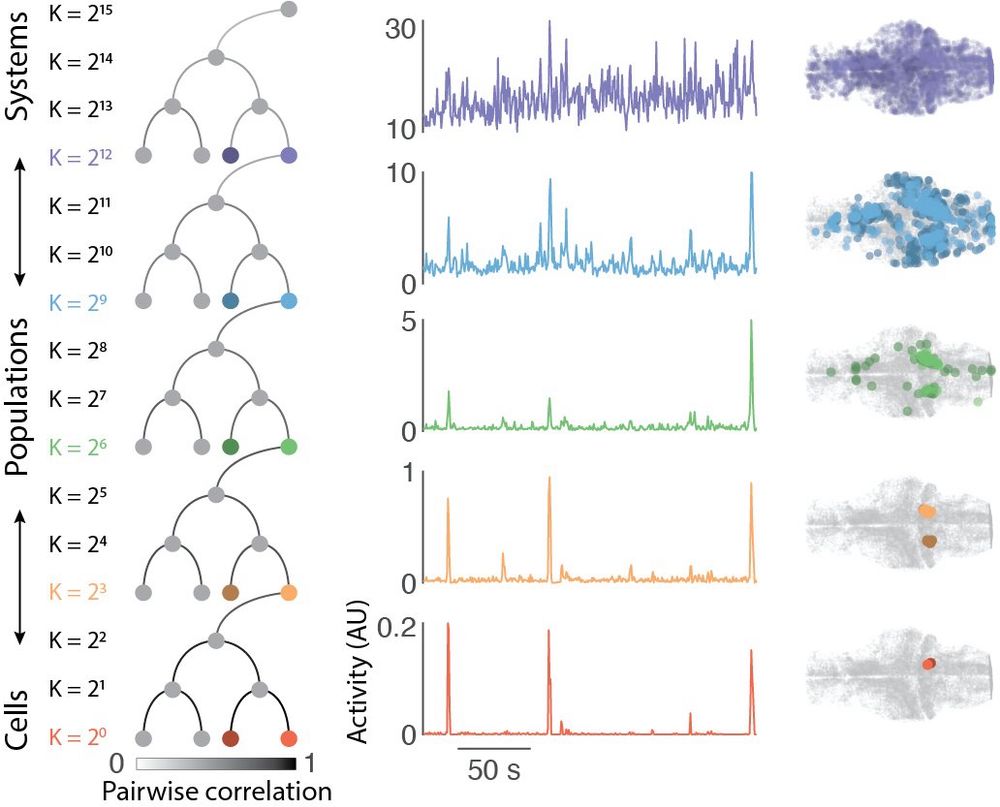

The code is all on GitHub. github.com/Bmunn/ICG
And, importantly, thank you to all the labs doing open science, permitting some Aussie scientists to test our crazy theories!

The code is all on GitHub. github.com/Bmunn/ICG
And, importantly, thank you to all the labs doing open science, permitting some Aussie scientists to test our crazy theories!
We found a conserved multiscale organisation trades-off efficient and resilient information processing regimes (spanning 1 billion years of phylogenetic diversity) and behaviourally functional neuronal reconfigurations, that are linked to the underlying structure.

We found a conserved multiscale organisation trades-off efficient and resilient information processing regimes (spanning 1 billion years of phylogenetic diversity) and behaviourally functional neuronal reconfigurations, that are linked to the underlying structure.
I bet this approach will be helpful for future behavioural studies!

I bet this approach will be helpful for future behavioural studies!
Interestingly, mice showed two distinct peaks of reconfiguration at the micro- and mesoscales, supporting the theory of multiple scale-dependent information processing streams.

Interestingly, mice showed two distinct peaks of reconfiguration at the micro- and mesoscales, supporting the theory of multiple scale-dependent information processing streams.
That is, a multiscale organisation permits flexibility to adapt to behaviourally relevant timescales.

That is, a multiscale organisation permits flexibility to adapt to behaviourally relevant timescales.

Though geometric networks worked well up to a scale dependence. See some related recent Aussie work by Pang et al 2023

Though geometric networks worked well up to a scale dependence. See some related recent Aussie work by Pang et al 2023
The C. elegans recordings contained tagged cells and a known anatomical connectivity, which let us show cross-scale functional pairings were far more likely if the cells had a physical connection.
That is multiscale structure and function!

The C. elegans recordings contained tagged cells and a known anatomical connectivity, which let us show cross-scale functional pairings were far more likely if the cells had a physical connection.
That is multiscale structure and function!
Again, with a conserved slope (despite the noisier measure), from sparse and fast activity at the cellular scale to more continuous fluctuations at the macroscale.

Again, with a conserved slope (despite the noisier measure), from sparse and fast activity at the cellular scale to more continuous fluctuations at the macroscale.
We found evidence for a precise self-similar coordination consistent across species (invertebrates, fish, mammals) and balanced between two extremes (identical/independent).
This was unique against various nulls!

We found evidence for a precise self-similar coordination consistent across species (invertebrates, fish, mammals) and balanced between two extremes (identical/independent).
This was unique against various nulls!
This shows that the cellular scale is optimised for efficiency, while coarser ensembles support resiliency. This mirrored a shift from heavy-tailed to Gaussian correlation distributions.

This shows that the cellular scale is optimised for efficiency, while coarser ensembles support resiliency. This mirrored a shift from heavy-tailed to Gaussian correlation distributions.
Crazily, I applied this to as many species as possible!

Crazily, I applied this to as many species as possible!


It’s been cooking for the past four years, and only possible with the dream team
@macshine.bsky.social
@drbreaky.bsky.social and co!

It’s been cooking for the past four years, and only possible with the dream team
@macshine.bsky.social
@drbreaky.bsky.social and co!


